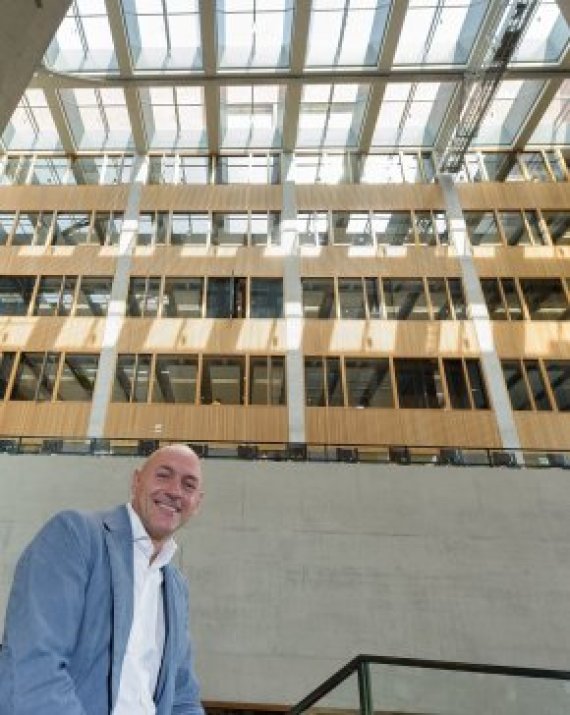Business scientist Herman Kok can be precise about it. Every additional thousand students reduces the student success rate by 0.3 percent. ‘And that might not sound like a lot, but 30,000 students means 10 percent lower results.’ Kok graduated last week with a PhD for research on the effect of facility management on higher education in the Netherlands.
It would seem obvious that good buildings and facilities contribute to successful studies. A lot of research has already been done on that, says Kok. But much of that research is qualitative or focused on just one aspect of the environment, such as light or air quality. There is no hard data. Kok looked for evidence, and found it. What he did was to ask 1755 teachers at 18 applied science institutions about a large number of features and services in the buildings where they worked. He correlated the answers with the success of their students in the form of the pass rate after 5 years at the institution. Kok: ‘There are considerable differences in the pass rate. At the worst schools only 49 percent get their Bachelor’s within 5 years; at the best schools, 79 percent do so.’
Remarkable results. The difference between the schools is 43 percent down to factors which can be influenced facility management. It is the size of the institution, according to the teachers, which has by far the biggest influence (40 percent). Students do not do so well at large institutions: such institutions schools are impersonal and students feel less at home and at ease there. That would seem to be something you cannot do much about. But that is not so.

‘The important thing,’ says Kok, ‘is to create a small-scale and meaningful environment for students. Make sure their own experience is of a more intimate setting.’ A good example is Saxion university in Deventer, says Kok. ‘There each degree programme has its own section of the building. With its own distinctive colour scheme, interior design and furniture.’ A bad example, in Kok’s view, is the Forum on our own campus. ‘The Forum is a sort of cathedral, designed to be imposing or even intimidating. As a user you feel insignificant. That is not the way to design things.’
But the Forum does have its strong points, says Kok. ‘The library is great. But the classrooms on the inside lack daylight, the acoustics are hopeless and the climate cannot be regulated.’ Among the more minor factors, a clean environment was the main one. ‘Cleanness is a strong motivator. If a place is smelly and messy, you soon start wondering what you are doing there. A place that is clean and tidy is somewhere you like to come to.’
Cleanness is a very strong motivator
Herman Kok
The problem is, as Kok indicates in his study, that executives do not think from the user’s point of view. ‘Top executives are very much oriented to the outside world; they are interested in making an impression and marketing the institute. Teachers and students, on the other hand, want an environment that is functional and stimulating. There is a contrast there.’ So his advice is: have a facility manager on the executive board. ‘One who knows what she’s talking about and speaks the language of both the executives and the end users. Executives do not know about the effects of facility management. Either they don’t know or they don’t believe that it contributes anything to the institution’s primary process.’
‘Executives, come out of your ivory tower,’ says Kok, ‘and get in touch with the user. Involve the user much more in facilities management. And by that I don’t just mean the annual user’s survey. You might as well get rid of that. With social media and living labs you can monitor non-stop these days. Then you have something to go by.’

